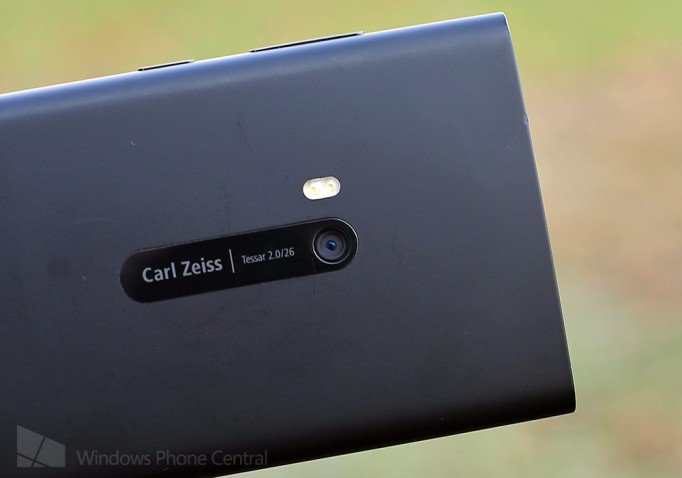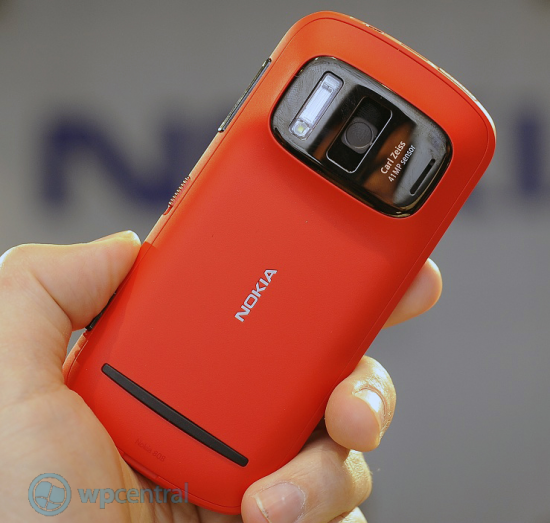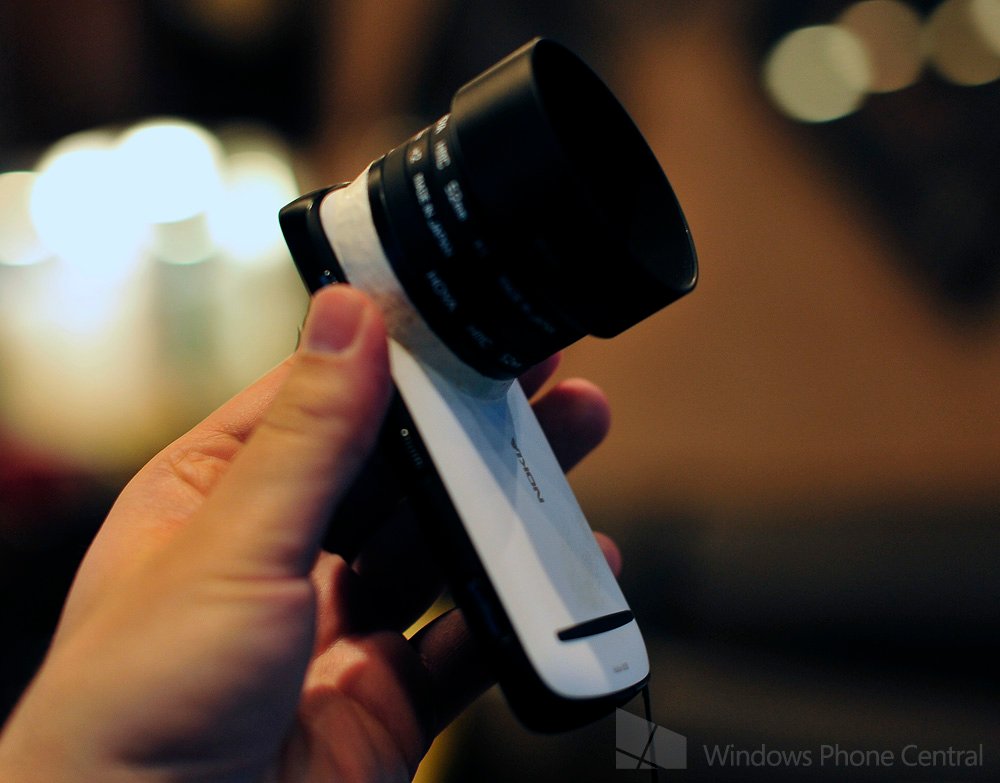Discussing cameras and the future of Windows Phone with Nokia's Juha Alakarhu

Although Nokia was not announcing any new Lumia Windows Phones here at CES 2013 in Las Vegas, they were still present here making sure people know that they mean business.
Luckily for us their photo guru, Juha Alakarhu, was there to take our questions regarding cameras and the future of mobile camerawork. Being in charge of Nokia’s imaging for their Lumia line gives him special insight into the field and since we’re photo enthusiasts ourselves, we had a lot to discuss.
Most of our conversation concentrated on chatting about their current cream of the crop, the Nokia Lumia 920 but who could also ignore that 808 Pureview with its 41MP image sensor? Not us. So both imaging technologies were discussed in tandem as well as what Nokia is thinking about what’s coming next. Join us after the break for some interesting tidbits behind Nokia’s photographic magic.
On those missing camera settings…
One of the big complaints some of us had regarding the Lumia 920 (and Windows Phone 8 devices in general) is the more limited aspect of manipulating camera settings. In short, the Lumia 920 while an outstanding piece of technology is missing such basic things as sharpening, contrast and metering options.
So the reason they are not there? To keep it simple for the user. This is in contrast to the 808 Pureview, which has three different modes for taking photos and each with a corresponding group of settings (something we prefer).
There is a debate of sorts at Nokia between those who believe you should just worry about shooting now and if you want to adjust things, do it afterwards versus those who want to adjust things on the fly. Nokia appears to be leaning towards the shoot-now, adjust-later style which is why things like Creative Studio for post-processing is often emphasized.
That’s not to say it will always be like this as Nokia in the past has had different menus settings in their various phones. But as of right now there doesn’t seem like there will be any significant changes to that menu system on the 920 or other Windows Phone 8 Lumias.
All the latest news, reviews, and guides for Windows and Xbox diehards.
Light metering on the Lumia 920
For those curious, the Lumia 920 uses Matrix style metering for determining exposure values when snapping a photo. For those who don’t know, cameras usually have three methods for measuring the light in a scene: Spot, Center-weighted averaged and Matrix.
Spot measures the light source at a very specific area of the photo, usually the center, ignoring the rest while Matrix is at the other end of the spectrum measuring all of the light in the scene from dark corners to a bright lamp—it then tries to balance the two extremes to give proper exposure. The third method is basically in between—it’s Spot but it also measures the immediate areas around the specific area for light information.
From our experience the Samsung ATIV S uses a center-balanced light metering technique while Nokia’s is more comprehensive, measuring everything i.e Matrix which we confirmed. This seems to be more important for low-light photography for the average user, which is why Nokia chose it over Spot or Proximity.

Why is the viewfinder on the 920 so dark when compared to the after shot?
We hear this complaint a lot with the Lumia 920: when taking a photo, the viewfinder is very dark, making it hard to see things but after one snaps the photo, it’s so much brighter (it also results in that “wow” effect of before and after).
Nokia is of course aware of the contrast and they may try to brighten the viewfinder in the future but the main reason for the effect is a technical limitation: the viewfinder is “seeing” the scene at 30FPS, which of course translates into a 1/30 shutter time. Compare this with the longer exposure shots that the 920 takes with optical image stabilization(OIS) and the lens can let a lot more light in to the sensor, resulting in it being brighter.
So no, Nokia didn’t do it on purpose to make the experience of taking a low-light photo more “extreme” but it is rather just a technical oddity.
Does the Lumia 920 have anti-aliasing (optical lowpass filter)?
Anti-aliasing filters are often found on high end cameras and it serves a specific function: to reduce jagged edges in photos, especially those with lower resolution. It’s quite a niche thing in photography but you may be surprised to learn that Nokia has in fact experimented with such technology.
Alas, they didn’t care for the results too much so as of now, the tool is not included in the Lumia 920 and probably won’t be used anytime soon. But hey, we think it’s cool that they’ve even explored that aspect for mobile photography.

Variable aperture—will it happen with mobile phones?
Aperture refers to the iris in the lens and how open (or closed) it can be when taking photos. When the iris is opened to the max, it results in a lower F-Stop, which on the Lumia 920 is a F2.0. The more open the iris, the more light it lets in, which is what we need for low-light photography. The downside is a lower F-stop results in a softer image with less sharpness.
Most “real” cameras have this number as a variable ranging from F2.0 up to F16 or something in between and it automatically increase when you zoom in on your subject. High end DSLRs often shoot at F1.4, though those lenses are very expensive.
But when it comes to mobile phones, fixed apertures are the norm despite advantages of being able to manipulate that setting e.g. landscape shots in the middle of the day, where a higher F-stop gives you a sharper image. Like anything else though there are tradeoffs when it comes to mobile and so far Nokia does not see physical variable apertures happening anytime soon due issues with sharpness and other complications.
The future of optical zoom for mobile cameras?
Optical zoom, the concept of adding more elements to a lens resulting in a variable range of focus is as old as the telescope. The problem with doing it mobile though gets compounded by the fragility of such a system.
For instance, we’ve all seen the Lumia 920 in tests dropped and battered around only to come away working and mostly unscathed. When you toss on moving lens component with various lens elements (especially if protruding), that aspect of the phone becomes very delicate and it probably won’t survive the most common, everyday drops or bumps.
Because of that, Nokia doesn’t seen physical zoom lenses coming anytime soon to our mobile phones. Instead, they’d rather concentrate on things like the 808 Pureview and its 41MP sensor. With that many megapixels, cropping a small portion of the image still results in an astounding image and cropping is technically a form of “zoom”. Because it has no moving parts and it can be manipulated in post-processing, Nokia is betting on that technology over a physical moving lens for the immediate future.
You also don’t get the variable aperture problem as noted above with an increasing F-stop meaning you can still take low-light photos but crop-to-zoom when necessary.

If Juha had one wish for mobile photography technology, what would it be?
We asked Juha if we could grant him any technology to put in mobile phones to greatly improve performance what would he wish to be possible. He ended up choosing the one go-to that all photographers know about: image sensor size. Namely bigger is always better.
What separates a cheap point-n-shoot from a $2K DSLR is the use of a much larger image sensor in the latter. A few of us here on the site use full-sensor cameras, like the Nikon D700, and it results in a far superior image due to the sensor being so massive.
In short the larger sensor the better the image quality because the light hitting it has a larger surface. This is not to be confused with “megapixels” which has to do with resolution. Side by side, a 10MP full-frame sensor will still destroy a 20MP phone-sized sensor any day, it’s not even close. And most photographers worth their salt know that anything more than 6 or 8MP does not make a better photo. In fact cramming more pixels on a small sensor can actual degrade the image and increase noise. (Though see the argument above for higher megapixels as a solution for optical zoom in mobile).
So for Nokia, trying to get the largest sensor in the phone is still the preferred method for increasing image quality. Of course pricing comes into play in addition to the available silicon.

Juha's custom DIY 808 Pureview with external lens
Adding external lenses to the camera?
A few months ago at Windows Phone Central we demonstrated how well magnetic lenses work on the Lumia 920, noting that although they are cheap and a bit gimmicky the result was actually quite impressive (see a recent music video shot using this technique). So we had to ask Nokia if they have considered something along the same lines.
The bad news is Nokia doesn’t appear to be getting ready to adopt this strategy but that’s not to say they aren’t toying with the notion. In fact, when we brought up the idea Juha’s face beamed with a grin as he excitedly fetched a fresh 808 Pureview from his bag.
The device looked like any other 808 except this had a custom DIY (“do it yourself”) lens attachment, allowing it to have a wide angle lens that could even take a hood attachment to block extraneous light from causing lens flare.
Now we need to emphasize that this is not some Nokia prototype but purely Juha’s own pet project. But it should at least demonstrate that the man behind Nokia’s imaging technologies is even experimenting with such embellishments.
Will we ever see such trimmings for future Lumia PureView phones? We’re not sure but we strongly encourage Nokia to consider the idea.
What about a mechanical shutter?
Nokia has actually used mechanical shutters before—like those found in genuine cameras. The Nokia N8, 808 and other high end phones did have such technology on board making the addition to a Windows Phone in the future quite plausible.
Mechanical shutters don’t have a universal advantage for everyday photos but they do have one big benefit: eliminating motion skew.
What’s motion skew? If you have ever taken a photo of fast moving objects or you yourself were moving while taking a photo, you may notice certain elongated objects become wavy in the resultant photo e.g. trees look like they’re bending. Mechanical shutters (as opposed to a rolling, digital one) eliminate those instances and are the preferred choice for photographers.
So regarding if we will see mechanical shutters in a Windows Pureview phones, history tells us that Nokia is quite familiar with the knowhow and will use it when warranted in future devices.

Wrapping it up
While our conversation with Nokia’s Juha Alakarhu was only 30 minutes, we actually covered a lot of ground in mobile photography.
The one thing we can take away from Nokia is they are definitely experimenting with every aspect of the field to bring the best and latest to our phones. From anti-aliasing to optical zoom to larger sensors to mechanical shutters, we know of no other mobile manufacturer that has such a wide range of engineers experimenting with mobile photography. Having said that companies like Samsung are clearly trying to cut into Nokia’s market and if there was one potential threat, we would worry it was them (see Samsung’s hybrid Android-point and shoot as an example).
Nokia’s Chris Weber and Juah Alakkarhu were both mum on future products but they did say numerous times that the Lumia 920 (and Pureview 808) were only the beginning. Come early 2013 and we’ll begin to see Nokia really unleash their photographic prowess on the market.
Our bet? We’ll see some new hardware from Nokia next month at Mobile World Congress in Barcelona. Of course we’ll be there to cover it live if and when that happens. Needless to say we’re excited about the prospect and so should you.

Daniel Rubino is the Editor-in-Chief of Windows Central. He is also the head reviewer, podcast co-host, and lead analyst. He has been covering Microsoft since 2007, when this site was called WMExperts (and later Windows Phone Central). His interests include Windows, laptops, next-gen computing, and wearable tech. He has reviewed laptops for over 10 years and is particularly fond of Qualcomm processors, new form factors, and thin-and-light PCs. Before all this tech stuff, he worked on a Ph.D. in linguistics studying brain and syntax, performed polysomnographs in NYC, and was a motion-picture operator for 17 years.
